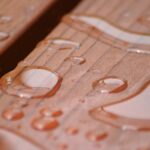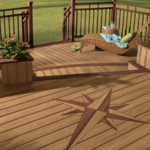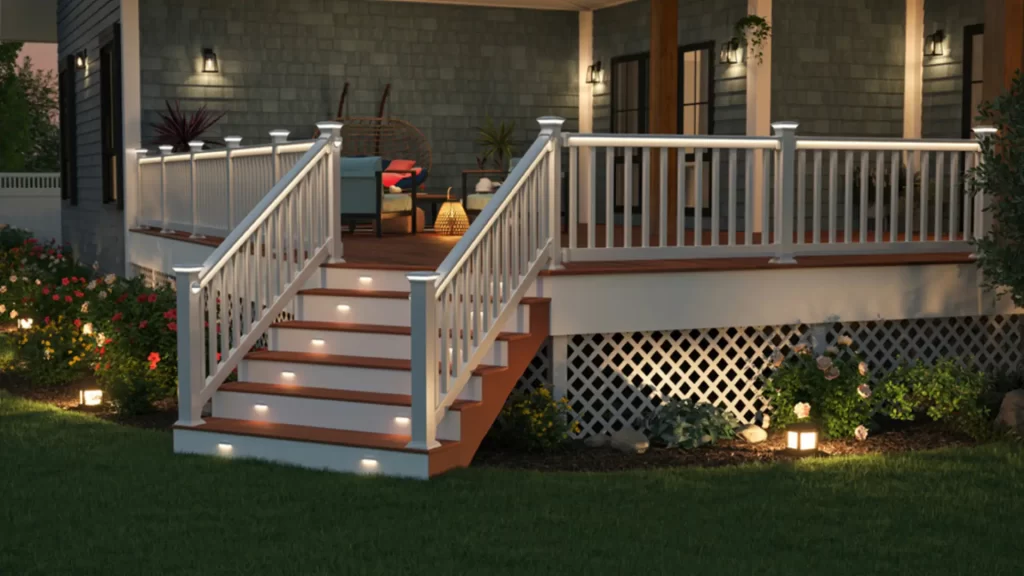Expert advice on choosing the best deck stain or paint for protecting your wood deck from the elements, including pros and cons of stains and paints.
When it comes to enhancing the beauty and durability of your outdoor deck, choosing the right finish is crucial. Wood deck stains and paints act as a protective barrier, shielding the decking from warping, cracking, or rotting caused by rain and snow. They also provide UV protection— reducing fading, discoloration, and deterioration caused by prolonged sun exposure.
But, should you stain your deck or paint it? With a multitude of options available, choosing the right finish can be challenging. Paints and stains both offer benefits and drawbacks that homeowners should weigh.
In this article, we’ll explore the common differences between deck stain and deck paint to help you make an informed decision about the perfect finish for your deck. We’ll look at the pros and cons of each type of finish, discuss the particular types of stains and paints available, and give you a few pointers for making a decision.
Pros and Cons of Deck Stain
Deck stain is a popular choice for homeowners who want to preserve the natural beauty of their wooden deck. It penetrates into the wood and gives the surface a somewhat “wet” look, enhancing the wood’s color and grain while providing protection against the elements.
Stains are available in a range of opacity—transparent, semi-transparent, and solid. In addition, they come in many different colors and tones from deep browns to rich colors like red cedar. The more opaque the stain, the more it takes on some of the characteristics of paint, such as the ability to hide imperfections, discussed below.
Deck stain is somewhat easier than paint to maintain, as it tends to wear off more gradually, and reapplying it can be reasonably easy.
Pros and Cons of Deck Paint
Because deck paint is entirely opaque and is colored, it creates a more dramatic transformation than stain—it completely conceals the natural wood grain and color. With this in mind, paint can hide knots and imperfections, giving a deck a totally fresh and uniform look. Deck paint offers excellent protection against UV rays, moisture, and foot traffic.
Painting a deck also significantly improves its durability. A painted finish provides a very protective layer on top, making the wood more resistant to wear and tear and foot traffic. This added durability also helps minimize the need for repair.
On the downside, deck paint tends to form a surface film that can peel and deteriorate, requiring repainting over time. And, once you paint a deck, you rule out the possibility of returning to the natural look of stains because stripping paint from a deck is a very difficult (if not impossible) job.
Types of Deck Stains and Paints
Here are the main types of deck stains and paints:
Transparent Stain
A transparent stain provides minimal color but allows the natural beauty of the wood to shine through. These stains offer a slight tint that enhances the wood grain while providing some protection against UV rays and moisture. Transparent stains are ideal for newer decks or those with beautiful wood characteristics that you want to showcase.
Semi-Transparent Stain
Semi-transparent stains offer a balance between preserving the natural look of the wood and providing more color. They enhance the wood grain and offer moderate UV protection. Semi-transparent stains are a popular choice for homeowners who want to add protection and some color while maintaining the wood’s character.
Solid Stain
Like paint, solid stains provide an opaque finish that conceals the wood grain but gives the wood an overall wood tone or color. Solid stains offer excellent UV protection and are effective at hiding imperfections like cracks or rough texture on older or weathered decks.
Acrylic Deck Paint
Acrylic deck paints are water-based and offer excellent durability and color retention. They form a protective film on the surface of the deck, providing resistance against moisture and UV rays. Acrylic paints are available in a wide range of colors and finishes. Because they are water based, they’re easy to apply and clean up.
Oil-Based Deck Paint
Oil-based deck paints penetrate the wood surface, offering long-lasting protection and durability that resists cracking, peeling, and fading. Oil-based deck paints are favored for older or weathered decks that require thorough protection and a new lease on life.
Did you know? In recent years, the term “oil-based” has become a misnomer. Many modern “oil-based” deck paints are now formulated with alkyd resins instead of traditional oils. Environmental concerns, such as volatile organic compound (VOC) regulations, have led to the development of low VOC and water-based alternatives. Alkyd resins offer improved performance and faster drying times compared to traditional oil-based paints—and they’re better for the environment.
Solid Color Deck Paint
Solid color deck paint is a specific type of deck paint that differs from traditional acrylic or oil-based paint in its appearance and functionality. Solid color paints formulated for decks offer a uniform, opaque finish that completely conceals a deck’s wood grain and imperfections.
They provide comprehensive coverage and are ideal for decks with significant wear and tear or decks made from lower-quality wood. Solid color paints offer superior UV protection and are available in an extensive palette of colors and shades.
The opaque nature of solid color paint helps it retain its color and appearance for a long time, reducing the need for frequent touch-ups or reapplication.
Making a Choice—Factors to Consider
Choosing between deck stain and deck paint is a decision that depends on the look you want, the deck’s condition, and the maintenance you’re willing to handle. While deck stain preserves the natural beauty of wood, deck paint provides a more transformative and protective coating. Here’s a closer look at factors to consider:
Aesthetic Preference
Think about the overall look you want your deck to have. Do you prefer the natural beauty of wood with a slight, woodsy tint? If so, go with a stain. Or are you seeking a bold, uniform color that masks the wood grain? In this case, you’ll be better off with paint.
The Deck’s Wood
The type of wood your deck is made of can play a crucial role in choosing the right finish. Some wood species, such as cedar or redwood, have distinct natural colors and characteristics that you may want to highlight with a transparent or semi-transparent stain. Other wood types, like pressure-treated lumber, usually benefit from a solid stain or deck paint that creates a uniform appearance.
Your Deck’s Condition
What’s the condition of your deck? If it is extensively weathered, with cracks and imperfections, deck paint will do a much better job of hiding these flaws. Related to this, deck paint offers better and longer protection against the elements than most deck stains. Similarly, for older or weathered decks, a solid stain can provide better coverage and hide blemishes better than a more transparent stain.
If you have a new deck or one that’s in good condition, a transparent or semi-transparent stain can enhance its natural beauty.
Environmental Factors
Take into account your area’s climate and environmental conditions. Paint or solid stains offer the highest level of UV protection and can withstand heavy foot traffic, while transparent and semi-transparent stains may require more frequent reapplication to maintain their effectiveness.
If your deck is exposed to intense sunlight or harsh weather, choose a paint or stain with high UV protection and moisture resistance.
Select paint or stain products that explicitly mention UV resistance or UV stabilizers on their labels. High-quality finishes often contain additives like UV absorbers or blockers that shield the wood’s surface from UV radiation.
Regularly maintaining the finish by cleaning and recoating as recommended by the manufacturer can cut down on sun damage and extend the life of the wood.
Maintenance
How much time are you willing to spend maintaining your deck? Transparent stains generally require less maintenance than opaque stains or paint, as they fade gradually and can be easily touched up. Solid stains or paint may need more frequent restaining or repainting to maintain their appearance.
Slip Resistance
If you live in a rainy area or if your deck is around a pool, consider a slip-resistant coating. These come with texturing agents that improve grip underfoot and maintain more traction when wet. Slip-resistant stains often rely on the wood’s natural texture rather than specific additives for enhancing slip resistance.
Find a Reliable Local Deck or Patio Builder
In Conclusion
Choosing the right deck stain or paint is essential for protecting and enhancing the beauty of your deck. Whether you opt for a stain or paint depends on your specific needs and preferences.
To summarize: Stains preserve the natural beauty of the wood, allowing the grain to show through while providing protection against the elements. On the other hand, paints offer a broader range of color options, solid coverage, and the ability to hide imperfections.
When making your choice, consider the following;
- The condition of your deck
- The look and aesthetic you want
- Durability and maintenance requirements
- Climate and environmental conditions (whether you need slip resistance or to increase UV protection)
By choosing the right deck stain or paint, you’ll ensure that your deck will serve as a durable, beautiful, and inviting extension of your home for many years to come.



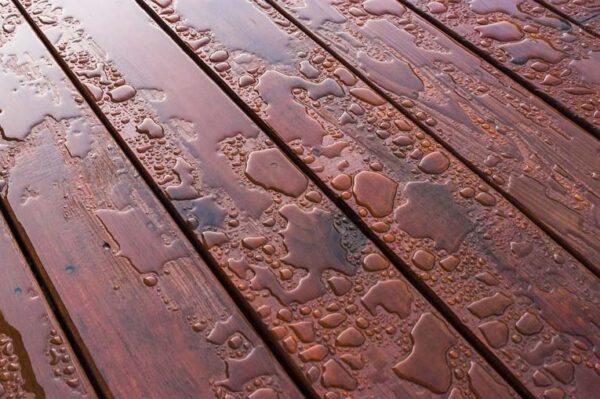
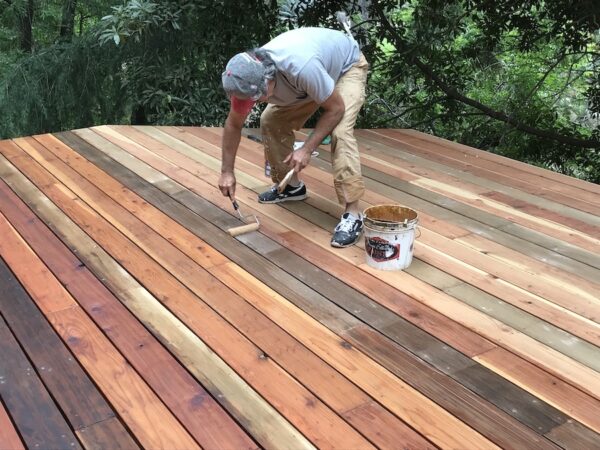
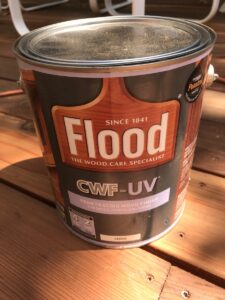
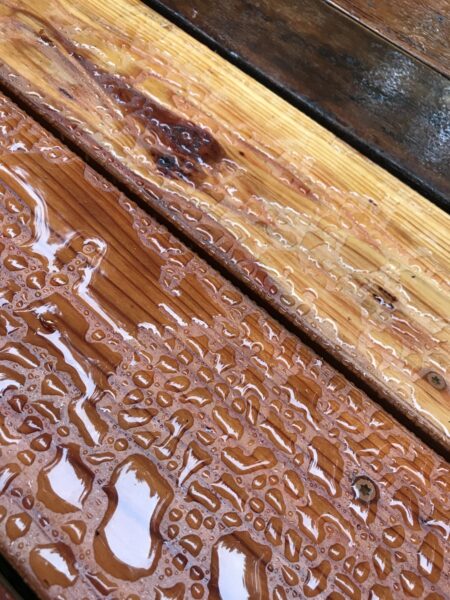

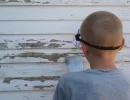
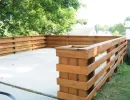

 Don Vandervort writes or edits every article at HomeTips. Don has:
Don Vandervort writes or edits every article at HomeTips. Don has:
